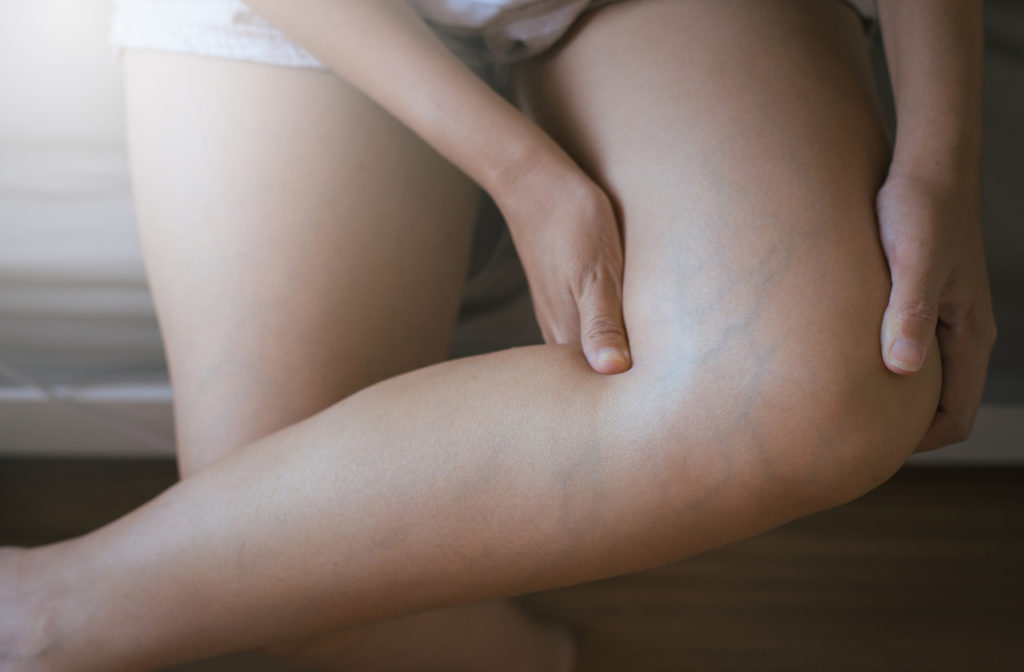Frequently Asked Questions About Varicose Veins & Treatments
Varicose veins are a common disease that affects millions of people in the United States. We wrote about the prevalence of the venous disease last month and noted that many Americans, especially women, suffer from symptoms of some form of varicose veins. Once people understand that they might be at high risk or start to notice symptoms, they quickly search for methods of prevention, treatment options, recovery, and any data about the rate of success of these treatments.
To help you in your quest for information on varicose veins, we’ve compiled a few of the most commonly asked questions.
- Are varicose veins preventable?
While varicose veins are not 100% preventable, there are certain steps you can take to minimize the symptoms. A lot of times the venous disease is a result of hereditary conditions, which is hard to prevent. It is also a consequence of other conditions such as obesity, multiple pregnancies, diabetes, or heart disease.
- What are some ways to reduce the risk or minimize the symptoms of the venous disease?
One big factor to consider is overall health. This goes for every other type of disease or condition, of course. Keeping a healthy weight, balanced diet, and staying active are ways to reduce the risk of having problems with your veins. Always stay hydrated and stay away from tobacco smoke.
- What type of exercises can help with varicose veins?
In terms of exercise, any exercise is better than none at all. Generally, you want to stick to low impact exercises done in moderation. Walking and running are good metabolic exercises that can get your blood circulating. If you are running, however, take caution and find a softer surface so you are not running long distances on pure concrete or cement, as this could be more detrimental. Bicycling is also great for varicose veins because it is low impact, strengthens the legs and gets blood really flowing throughout your lower body. If you do not have a bicycle, doing bicycle legs while laying on the floor can have similar effects and offer relief. Also, doing leg lifts, lunges, and squats can help in really strengthening the legs and getting the blood moving, which is key!
- Does my desk job affect my vein health?
It can most certainly have an impact. If you are already predisposed to varicose or spider veins, sitting down for long periods of time can be increasing some of those symptoms. Sitting prevents blood from flowing freely throughout the body. This can be remedied by making an effort to stand up regularly and walking around, shaking your legs, shifting position regularly, etc. Even just changing your position can make an impact, as it helps to keep the blood flowing.
- What treatment options are there for varicose veins?
Thanks to a developing field of study in vein health, there are numerous excellent options out there for people suffering symptoms of venous disease.
One of these treatments is Sclerotherapy, a relatively easy procedure that involves the injection of a solution into the vein in order to collapse it, or shrink it, and remove it. This sounds pretty scary but it is actually pretty routine. This type of procedure has been used since the 1930s and has little to no side effects.
Another form of therapy includes Endovenous Laser Therapy (EVLT) which uses laser energy and ultrasound to treat the damaged veins. This procedure takes about half an hour and is relatively simple with proven results. Patients that undergo the procedure report significant relief from painful symptoms, better circulation, and better appearance. The great thing about a lot of venous disease treatments is that they are minimally invasive and don’t require long and arduous recovery times.
- What are the success rates of these treatments?
The good news for patients of varicose veins is that all of the treatments available, especially with today’s advancements in technology, are not only very successful but produce little side effects. EVLT has a success rate close to 98% and is the same across age groups. The complications from the procedure are always very minor and can range from bruising to temporary numbness or a sensation of tightness.
Trust Only the Best With Your Treatment — Contact El Paso Varicose Veins Laser Clinic
Venous disease is far too complicated to cover everything here. If you notice the appearance of varicose or spider veins and are experiencing symptoms of pain, swelling, or discomfort, it might be time for you to seek treatment. A simple evaluation can give you a good idea of what your treatment options are. At El Paso Varicose Veins Laser Clinic, we are happy to evaluate your veins and provide you with the best treatment options. Give us a call today!

